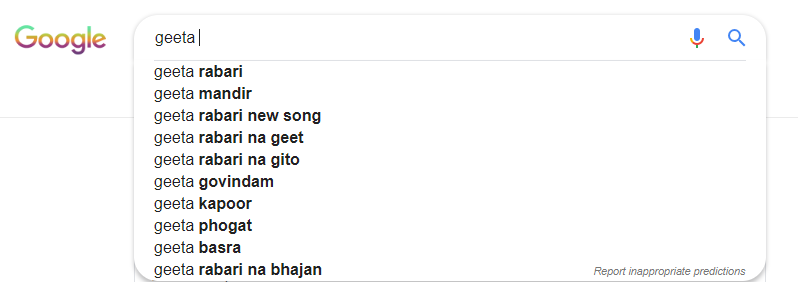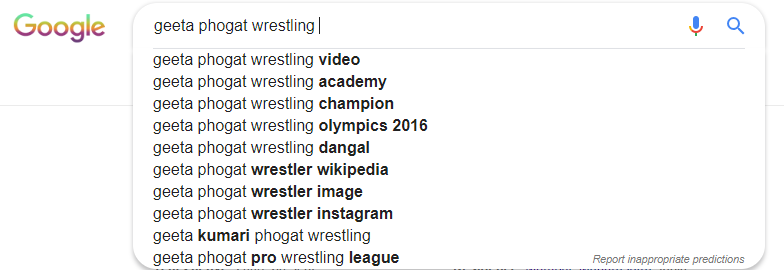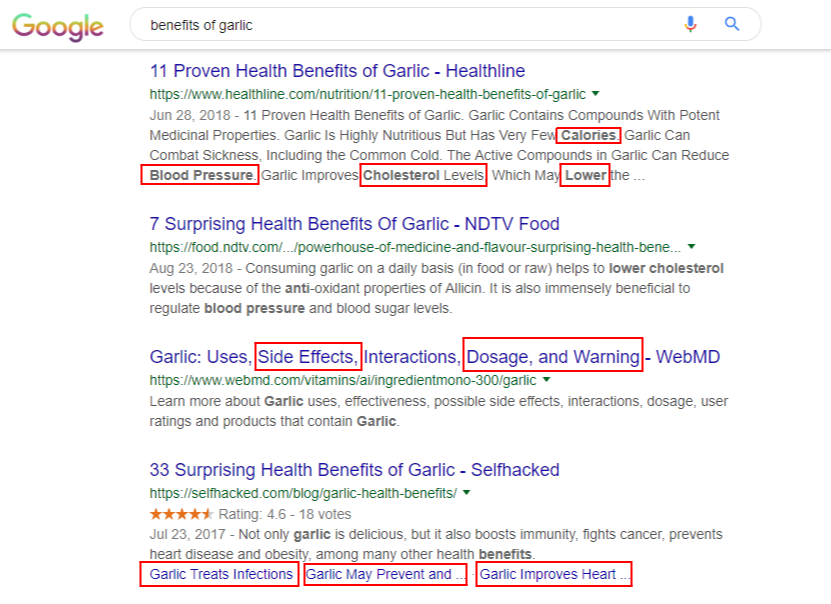Keyword research has come a long way thanks to evolution and updates of the search engine algorithm. Newer channels and updated style of marketing is evolving with each passing day. LSI keywords are one of the trending techniques used by the marketers in order to outperform their competitors and gain the top spot in search engine result pages.
In this article, we will see everything you need to know about LSI keywords and how it can increase your organic traffic.
Table of Contents
What are LSI keywords
LSI, also known as Latent Semantic Indexing is a set of keywords that are related to your primary keywords. Nowadays, finding LSI keywords for a website is the top priority for marketers.
Keywords are the greatest arsenal in any marketer’s career. It can either skyrocket your sales or jeopardize your marketing campaigns. To ensure maximum success in your campaigns, you need to strategically include LSI keywords in your content for better visitor engagement.
What are not LSI keywords
Few people out there believe that LSI keywords are synonyms of the main keywords and long tail keywords. Well, sorry to break it to you – they are neither of them.
Let me tell you how LSI keywords are different from your primary keyword’s synonyms and long tail keywords with the following examples.
LSI keywords are similar word phrases which are often found out together with the main keyword on the internet. For example, when you type something in Google’s search bar, it will autocomplete your query with related keywords that people often search for.
For example, when you search for the Indian name ‘Geeta’ on Google, you are can see Google suggesting the best terms that would match your search queries in the form of autocomplete (see the screenshot below).

One of them is a famous temple in Assam while the other is a celebrity choreographer. Geeta Phogat is a renowned athlete and Geeta Basra is an Indian actress. All the terms like ‘Mandir, Rabari, Phogat and Basra’ are related to the keyword ‘Geeta’ but are NOT the synonyms of it. This relation with the primary keyword forms LSI keywords.
Now, even if they are related to each other, it doesn’t mean that they are long tail keywords either. To put it simply, long tail keywords can be LSI keywords but it is not the other way around. Going forward with the above example, when you search for the term ‘Geeta Phogat’, it shows below suggestions.

These autocomplete suggestions are considered as both, long tail keywords and LSI keywords. However, if you trim down on one or two phrases except for the primary keyword, it would still be considered as an LSI keyword.
Why are LSI keywords required in the first place
You might be confused as to why do we need LSI keywords when we already have keyword density to help us outline our keyword distribution strategy throughout our content. Well, keyword density is just a metric that lets us know how many times the primary keyword needs to occur in the content in order to potentially rank in Google’s search engine result pages.
Effect of Google Hummingbird Update
Ever since Google discovered that webmasters had started stuffing keywords into their content on their website to rank their web pages, they altered the search ranking algorithm and ranking system. The engineers at Google evolved their algorithm by introducing an update in 2013 known as the Hummingbird. The rollout of this update shook the world of search engine optimization overnight as it brought about major changes to the core algorithm, unlike its predecessors which were just add-ons to the existing algorithm.
After the Hummingbird was introduced, there was an instant shift in rankings and people many observed their websites being deindexed from Google, even if they were previously on the first page of search results.
Understanding search intent
Hummingbird focuses on the user’s search intent by deeply analyzing their query and connecting it with its synonyms and related keywords to present better search results. But earlier, that wasn’t the case.
In the pre-Hummingbird era, search engines were deeply obsessed with web pages that had the most occurrences of a particular keyword for the search query. Hence, people were not able to find satisfactory answers to their questions because the websites involved with keyword spamming got higher rankings.
Thanks to Hummingbird, Google became solution oriented and started giving users improved and better results to their questions.
How can LSI keywords improve your ranking
As a website owner, you need to understand why users come to your webpage in the first place. You should find keywords which you can target on your website and create content accordingly. To start with your LSI keyword research, you should consider the related fields of study with respect to your main keyword to find LSI keyword ideas. Here’s an example to help you better understand how LSI keywords can help improve your Google rankings.
Latent semantic indexing example
Consider an example where you are running a health and fitness blog where you share tips and techniques to improve people’s well-being.
You might want to write an article about the ‘benefits of garlic’ in people’s diet. When you search in Google for the keyword to better understand your competition, you can see the below results. Usually, Google highlights the keywords on its SERP. Here, you can see that main keyword, ‘benefits of garlic’ is not seen much in the results.

Instead, Google has highlighted the other related terms like ‘Blood Pressure, Cholesterol Levels, Lower’, etc. Moreover, in the third search result, you can see that the title tag does not even include the complete phrase that we had searched for. Instead of ‘benefits’ we could see other phrases like ‘Side Effects, Dosage, and Warning, etc’.
Furthermore, on the last search result present on the screenshot, there are site links pointing to other relevant headings on that particular web page which are relevant to our keyword. These anchor texts do not even have the primary keyword that we had searched for in the first place.
Although Google displayed search results that did not mention ‘Benefits of Garlic’ directly, the search results are very relevant to the primary keyword. The above example search result page demonstrates the whole point of using LSI keywords within your content. When you are using LSI keywords, you can rank for both, the primary keyword and for other keywords which are relevant to the primary keyword.
This is just an example to help you understand the importance of using LSI keywords in your content. As per your niche and topic, you can identify which other information users would like to know about your keyword and use them accordingly in laying out a proper content strategy. Make sure to include as many LSI keywords as possible related to the primary keyword to stand a better chance to rank. But don’t overuse them.
How to find LSI keywords
There are many tools and resources available online which you can use to find your potential LSI keywords. LSI Graph, Google Keyword Planner, and Answer the Public are some of the best free LSI keywords generators. KWfinder is another useful tool you can leverage for your keyword research activities. Its clear user interface and real-time results will help you uncover some profitable LSI keywords which you can target through your SEO and content marketing activities. If KWFinder doesn’t work well for you, you can go with these KWFinder alternatives to find out phrases related to your main keyword.
You may also use a keyword search volume tool like Keywords Everywhere along with Google’s related searches box at the end of the search engine result page to discover potential LSI keywords with good search volume. If you have got enough time, you can also study how your competitors are writing content and including LSI keywords for their niche. By doing so, you will be able to gather new ideas for your website and steal the traffic from your competition.
Conclusion
Gone are the days when search engine rankings were highly influenced by the keyword density. Nowadays, just targeting your primary keyword is not enough.
Once you have done some keyword research, you will have to find other relevant keywords in your niche. By using some of the best keyword research tools I have mentioned above, you can save a whole lot of time and resources.
Tip: Many people do the mistake of unnaturally adding LSI keywords to their content. Never do that. Overusing LSI keywords within your content in places not necessary will not boost your SEO rankings and Google may mark your behavior as spammy and penalize your website instead.
What do you think? Do you have any other ideas to find relevant LSI keywords? Drop your views and experience with LSI keywords in the comments section below.
This is a guest post by Nirmala. She is an authority blogger at WPGlossy.com. She loves to dig into WordPress and share her in-depth knowledge with her blog audience. While she is not writing WordPress related articles, she practices Yoga to improve her focus. You can also connect with her on Facebook.

Hi Antony,
I agree that LSI keywords increase the ranking in SERP and helps to generate organic traffic but I saw that you have used less LSI keywords in this article. However, the article is very informative and engaging.
I would like to know how many LSI keywords we need to use in a 1000 words article.
BTW, my wife’s name is Geeta too 🙂 🙂
Hi Rajinder,
Thanks for reading my guest post. Glad you liked it!
You may use 8 to 10 LSI keywords in the 1000 words article. Make sure that you are not doing the keyword stuffing and writing for your audience to improve the user experience.
Regards,
Nirmala
Hi Nirmala,
Thanks for your reply.
I will take care of keyword stuffing.